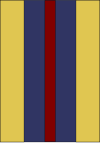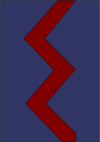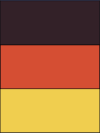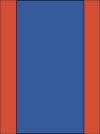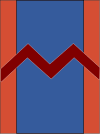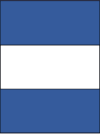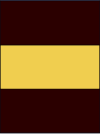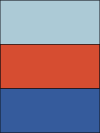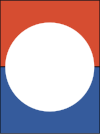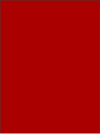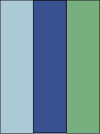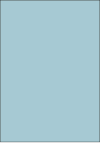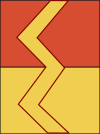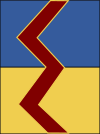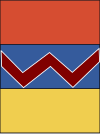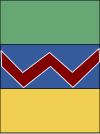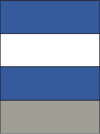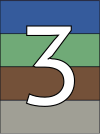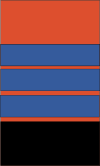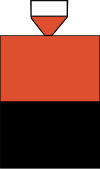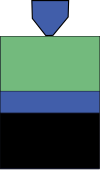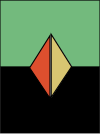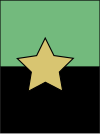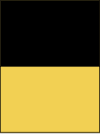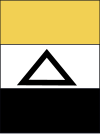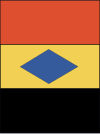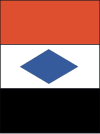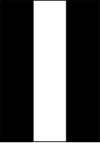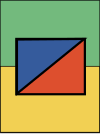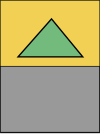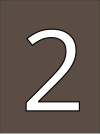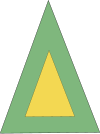
Fusilier is a name given to various kinds of soldiers; its meaning depends on the historical context. While fusilier is derived from the 17th-century French word fusil – meaning a type of flintlock musket – the term has been used in contrasting ways in different countries and at different times, including soldiers guarding artillery, various elite units, ordinary line infantry and other uses.
The hackle is a clipped plume or short spray of coloured feathers that is attached to a military headdress, with different colours being associated with particular regiments.

The State Artillery Regiment is a reserve artillery regiment of the South African Army.

The Sandfontein Artillery Regiment is a reserve artillery regiment of the South African Army.

The Pretoria Armour Regiment is a reserve armoured regiment of the South African Army.

The Chief Langalibalele Rifles is a reserve infantry regiment of the South African Army.

The Autshumato Anti-Aircraft Regiment is a reserve air defence artillery regiment of the South African Army.

The uniforms of the British Army currently exist in twelve categories ranging from ceremonial uniforms to combat dress. Uniforms in the British Army are specific to the regiment to which a soldier belongs. Full dress presents the most differentiation between units, and there are fewer regimental distinctions between ceremonial dress, service dress, barrack dress and combat dress, though a level of regimental distinction runs throughout.

The caubeen is an Irish beret, formerly worn by peasants. It has been adopted as the head dress of Irish regiments of Commonwealth armies.

The maroon beret in a military configuration has been an international symbol of airborne forces since the Second World War. It was first officially introduced by the British Army in 1942, at the direction of Major-General Frederick "Boy" Browning, commander of the British 1st Airborne Division. It was first worn by the Parachute Regiment in action in North Africa during November 1942.
The South African Army is divided into functional branches, known as corps. Most consist of units, but some, such as the SA Staff Corps, consist only of personnel who are assigned to headquarters and units. The following is a list of corps established since 1912; those which still exist are shown in bold.
The military uniforms of the Union Army in the American Civil War were widely varied and, due to limitations on supply of wool and other materials, based on availability and cost of materials. The ideal uniform was prescribed as a dark blue coat with lighter pants, with a black hat. Officer's ranks were denoted with increasing levels of golden decoration. Specific jobs, companies, and units had markedly different styles at times, often following European customs such as that of the Zouaves. Officers uniforms tended to be highly customized and would stray from Army standard. Ironically, several main pieces of gear had been created by order of Confederate president Jefferson Davis before the war, when he was United States Secretary of War.

Troops began wearing berets as a part of the headgear of military uniforms in some European countries during the 19th century; since the mid-20th century, they have become a component of the uniforms of many armed forces throughout the world. Military berets are usually pushed to the right to free the shoulder that bears the rifle on most soldiers, but the armies of some countries, mostly within Europe, South America, and Asia, have influenced the push to the left.
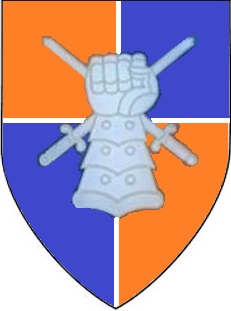
The South African Army Armour Formation provides an Armour capability to the South African Army. The Formation came into being as part of a restructure. South African Armour Corps units previously under the command of various different brigades and other formations were all grouped under one formation. All armour is assigned to the SA Army Armour Formation under the charge of a General Officer Commanding.

7 South African Infantry Division was a formation of the South African Army, active from the 1960s to 1999.
This page details the South African Army order of battle in 1940, before and after the formation of expeditionary forces.

8 South African Armoured Division was a formation of the South African Army, active from the 1970s to 1999.

7 Medium Regiment was based in Benoni, South Africa, and was responsible for the training of soldiers allotted to Field and Medium Artillery.

26 Field Artillery Regiment was an artillery regiment of the South African Artillery.





